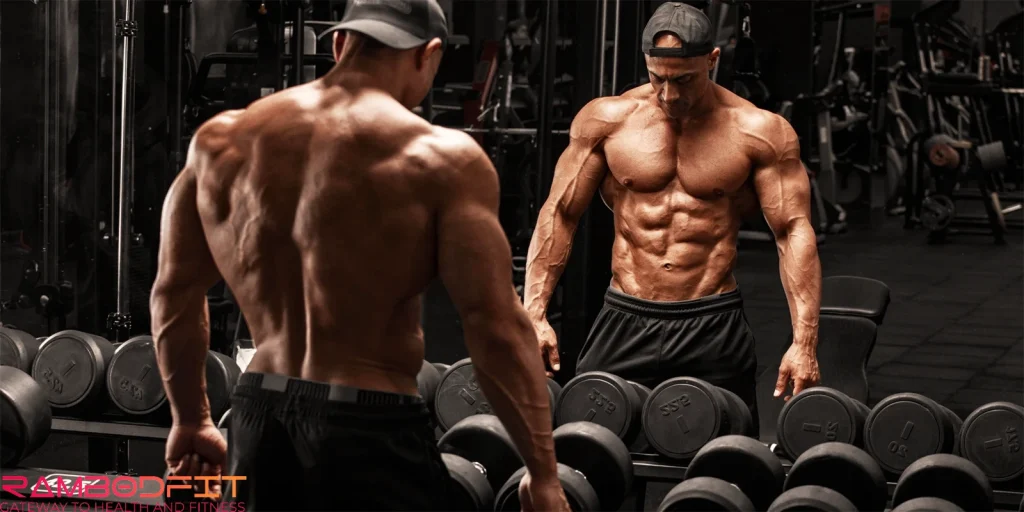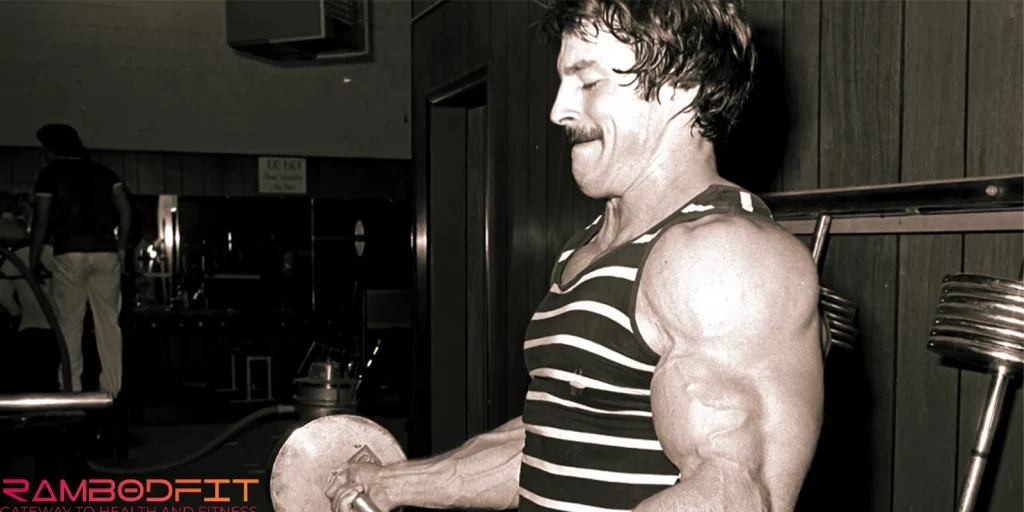


Alright, let’s just cut to the chase—every gym rat, casual lifter, or even that guy who only shows up for the sauna, they’ve all got one thing rattling around their brains: “Am I actually working hard enough, or am I just faking it for the ‘Gram?” Seriously, it’s that nagging little voice every time you rack a weight, especially when training hard for muscle growth is the goal.
Some folks swear the secret sauce is grinding out every set until you’re making faces that’d scare your grandma—pushing till your muscles just straight-up quit on you and your arms turn to spaghetti. You know, that heroic, “I literally can’t move” kind of effort. But then you’ve got a stack of research nerds waving their spreadsheets, going, “Well, technically, you don’t have to annihilate yourself every single time to get jacked.” Meanwhile, some other experts are still shouting, “But failure does work, bro!” It’s a classic debate in the world of training hard for muscle growth.
So, what’s the actual deal? Should you bust a vein on every set, or is there a smarter way to get swole without feeling like you got hit by a truck the next day? That’s the kind of question only serious lifters chasing training hard for muscle growth ask themselves.
We’re about to dig into both camps—the whole “Reps in Reserve” (RIR) thing versus the “train till you collapse” crowd—and figure out what’s actually gonna help you put on some muscle, without losing your sanity (or your gains). Don’t stress—Rambodfit’s here to spill the beans while keeping your focus locked on training hard for muscle growth.
Table of Contents

1. Strength That’s More Than Just Show
Yeah, big arms look cool—no one’s denying that. But honestly, the real flex is what they do for your lifts. Think about it: solid biceps and triceps aren’t just decoration, they’re the backup crew for everything from benching to pull-ups. Forget shaky reps or sloppy form. When your arms are dialed in, you’ve got control, even on days when you’re running on empty and just grinding it out, all thanks to training hard for muscle growth.
2. Real-World Usefulness & That Swagger
Strong arms make life sooo much less annoying. Groceries? No problem. Suitcase? Bring it on. It’s wild how much more put-together you feel—like, “Yeah, I got this.” And it’s not just physical; you walk a little taller, chest out, like you’re starring in your own action flick. Plus, if you’re chasing those quad gains, balanced arms just pull the whole look together. Symmetry, baby—and that’s the real reward of training hard for muscle growth.
3. Look Good, Feel Good (No Shame)
Let’s be real—everyone loves a good pump. There’s something about filling out a t-shirt or catching a glimpse of a vein in the right light that just hits different. Balanced, strong arms finish off your upper body and make you look, well, athletic. And every time you see progress? It fires you up to hit the next workout, no joke, because that’s what training hard for muscle growth is all about.
What Is RIR (Reps in Reserve)?
Alright, so RIR—it’s just “Reps in Reserve.” Basically, how many more reps you could crank out before your muscles tap out completely. Let’s say you’re banging out curls, you hit 10 reps, but deep down you know you could maybe force out two more if someone was dangling pizza in front of you. That’s an RIR of 2. Simple, and it’s a smart tactic when you’re training hard for muscle growth.
Here’s the thing—this isn’t some lazy cop-out. You’re not slacking, you’re just being strategic. Leaving a couple reps in the tank? That’s how you keep your body from totally frying itself. You still push hard, just not straight into the wall every single set. Turns out, doing sets with 1–3 RIR actually keeps your muscles fired up without wrecking your recovery or turning your brain to sludge, which is crucial when training hard for muscle growth.
Honestly, the first time I heard about RIR, it flipped my whole approach to lifting. I used to think you had to limp out of the gym, practically seeing stars, for gains to happen. Then I tried backing off a smidge—leaving a rep or two behind. And guess what? My strength started moving up in a steady way, not just random lucky weeks. Plus, I wasn’t hobbling around sore for days, so I could hit the gym more often while still training hard for muscle growth.
Bottom line? RIR training is like playing chess instead of just smashing pieces together. It’s about training smarter, not just going full beast mode till you can’t move, and that mindset shift is what truly defines training hard for muscle growth.
Honestly, you don’t have to grind yourself into the ground every time you hit the gym—training hard for muscle growth doesn’t mean total annihilation. Turns out, science backs this up—yeah, I’m talking about actual nerds in lab coats. A study I stumbled across on PubMed in 2023 (Ruple et al.) basically says if you stop a set with 1 to 3 reps left in the tank, your muscles still grow just as much as if you went all-out to failure. PMC+1 The best part? You won’t feel like you got hit by a truck the next day. Recovery’s smoother, too—exactly what you want when you’re trying to keep training hard for muscle growth.
So, the evidence suggests that RIR-based training may actually be better suited for consistency, especially for athletes who train several times a week.

Alright, don’t go tossing failure training out the window just yet—training hard for muscle growth sometimes means pushing to your limits. Yeah, I get it—cranking out reps until your arms feel like overcooked noodles might sound a bit nuts, but that’s actually where the magic happens for muscle growth. We’re talking about squeezing out every last bit of strength from your muscles, whether it’s a bench press, squat, or even those punishing lateral raises. That kind of effort? It’s like sending your muscles a text that just says, “Grow. Now.”
But here’s the kicker: if you make every single set a death match, your body’s gonna start sending you angry emails. Muscles, joints, nerves—they all get fried if you push to failure nonstop. Do it too often and suddenly you can’t recover, your progress stalls, and, honestly, you just start to feel like garbage. That’s why balancing intensity is key when training hard for muscle growth.
So, what do the pros do? They’re not out here failing every set like lunatics. Nope. Most of the time, they keep a couple reps in the tank—maybe two, maybe three—just to keep things sane. Then, when it’s time for that last set? Boom, all out, leave nothing behind. This is the smart strategy behind training hard for muscle growth without wrecking yourself.
Let’s say you’re benching: first round, stop when you could’ve done three more. Next set, leave two in reserve. Last set, though? Go full beast mode—push until the bar just isn’t moving. That way, you still get the benefit of flirting with failure, but you’re not wrecking your body in the process, all while training hard for muscle growth effectively.
It’s all about balance, man. You wanna train hard, but you also wanna be able to walk tomorrow, right? Training hard for muscle growth doesn’t have to mean crippling yourself every session—it’s about smart, controlled effort.
Look, the point isn’t to just limp your way through a workout and call it a victory lap. The real win? Actually adapting, getting better—not just dragging yourself through pain for bragging rights, all while training hard for muscle growth.
So many athletes get it twisted and think “more pain, more gain.” Yeah, sure, if you want to end up broken. The truth? The best progress comes from hitting it hard enough to matter, but not so hard you can’t come back for more. Consistency and recoverability—those are the secret sauce, especially when training hard for muscle growth, not living in a constant state of wreckage.
Here’s the thing: muscles don’t give a damn about how much you suffer in the gym. They grow when you’re chilling, eating, sleeping—not while you’re busy breaking them down with every last rep-to-failure set you saw on TikTok. If you keep trashing them without giving them a chance to bounce back, you’re just shooting yourself in the foot. Recovery is where the real magic is hiding, which is why smart programming is key to training hard for muscle growth. Don’t skip it.

Look, killing yourself in the gym every session? That’s not the flex people think it is. Training with some actual intent—now that’s where the magic happens, especially when you’re training hard for muscle growth.
This whole RIR thing? Honestly, it’s underrated. It keeps you pushing hard, just not so hard you end up crawling out the door. You want growth? Push close to the edge, don’t yeet yourself off the cliff. Sprinkle in a few sets to absolute failure now and then, and boom, you’re cooking up real gains without burning out—this is exactly how you make training hard for muscle growth sustainable.
So, next time you’re sweating it out, don’t just ask, “Did I torture myself enough?” Maybe ask, “Did I actually train smart today, or just make it unnecessarily miserable?” Trust, your future self will thank you for focusing on training hard for muscle growth with some strategy instead of chaos.
RIR is excellent for both, but beginners benefit even more. It teaches control, awareness, and proper form — without pushing the body to exhaustion. Advanced lifters can also use it to fine-tune volume and avoid burnout.
This takes practice. Start by going to failure once to understand your limit, then back off slightly in future sets. Over time, you’ll develop an internal sense of how many reps you have “left in the tank.”
Absolutely. Research shows that as long as you train close enough to failure (within 1–3 reps), you can maximize hypertrophy. Failure is a tool, not a rule.